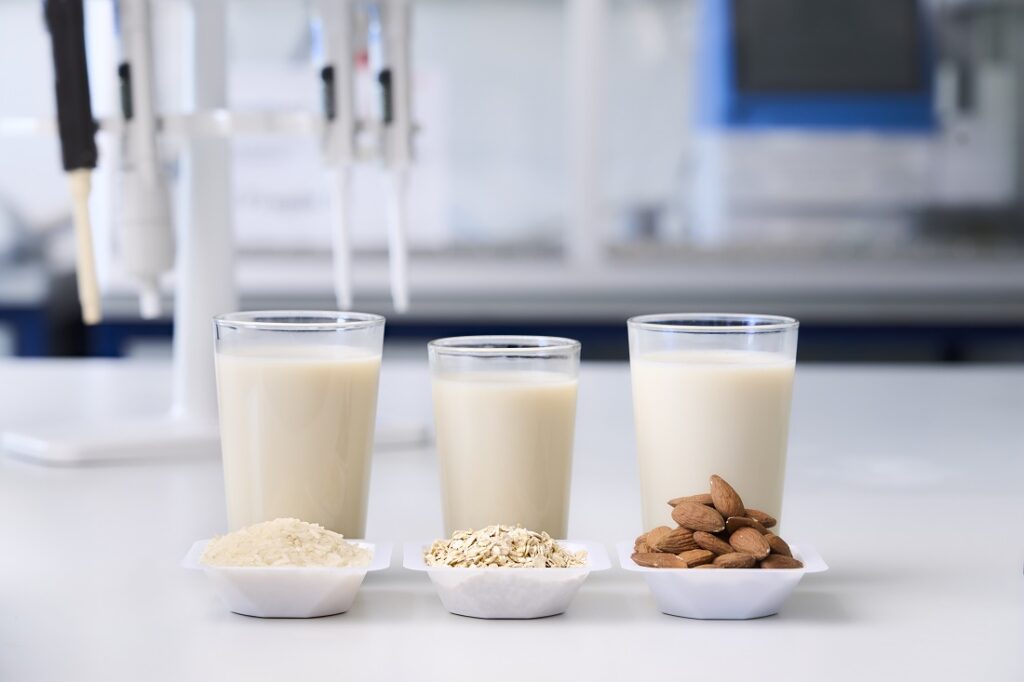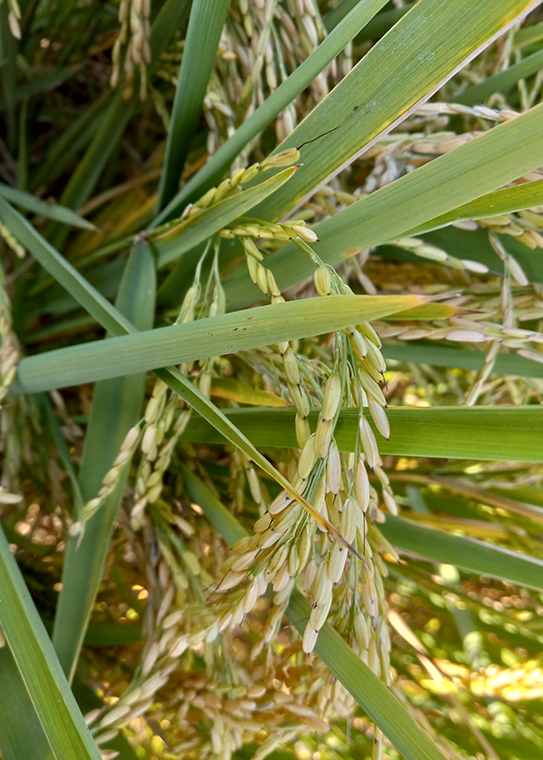Virtual Fences Aid Pollinators in Ranchlands
Fences are an effective stationary method of corralling livestock, but their sharp borders can create sudden changes in native grassland vegetation and the pollinators and birds that live there. Virtual, GPS-based fences may be the nature-friendly future of fencing, creating more natural grassland habitat.
In a new study, researchers at Oklahoma State University investigate how virtual fencing technologies could ease ecological impacts on grassland vegetation. In cattle virtual fence systems, as cows wander toward virtual fence, they receive an auditory warning from their collar. If they ignore this and move closer to the fence, they receive an electrical stimulus similar to one from an electric fence.
Previous work on virtual cattle fences focused on their efficacy for containing livestock, such as excluding the animals from sensitive ecosystem areas that are being restored, and has showed that continuous grassland habitat is more beneficial for supporting bird and pollinator diversity and abundance than fragmented habitat. The researchers hypothesized that the warning from the collar as cattle approached the virtual fence would prompt the animals to graze more randomly, rather than forage right up to a physical fence — making the ecological boundary between grazed plains and natural grassland more gradual.
To test that, the researchers set up six 1,000-square-meter study sites at the Oklahoma State University Bluestem Research Range. Within the grassland pasture, the team created linear boundaries, with three plots with physical fences and three having virtual fence lines. The cattle grazed in the study sites during the spring and summer seasons.
Using drone imagery, the researchers surveyed the six sites and created height models of the vegetation. They then compared the vegetation heights in the traditional fence and virtual fence with ungrazed rangeland. They found the virtual fence created a gradual transition more than 50 feet from the fence, changing from native grassland to fully grazed grass. Additionally, in the virtual fence areas, the researchers found a greater variation of vegetation heights compared to the fenced rangeland. This transitional zone could help increase native habitat for pollinators and birds.
In Short…
More than 25 percent of the water taken out of the Colorado River for human consumption goes toward irrigating alfalfa fields. Colorado State University scientists are running tests on alternative livestock crops, including Kernza, sainfoin, and silflower, in an effort to find a less water-guzzling alternative.
“Bathing” seeds in high-temperature steam can eliminate pests and pathogens. Swedish company Thermoseed is using this process — with a specific combination of temperature, humidity, and time for each type of seed — to decrease the use of synthetic chemical treatments on seeds.

Nature Wins: Across Southeastern U.S., Weedy Rice Has Become Herbicide Resistant
Weedy rice is a close relative of cultivated rice that infests rice fields worldwide and drastically reduces yields. To combat this agricultural pest, rice growers in the southeastern United States have since the early-2000s planted rice cultivars genetically modified to allow them to apply herbicides that target weedy rice.
But only a handful of years after the introduction of this “herbicide-resistant” rice, Arkansas farmers started reporting that weeds in their fields were becoming herbicide-resistant too. Laboratory analysis verified these accounts: Scientists saw evidence that the weeds were breeding with the crop rice and that subsequent generations of hybrid weeds had some level of genetic resistance to herbicide.
Now a new study from Washington University in St. Louis shows that more than half of the weedy rice sampled in the rice-growing region of the southeastern U.S. has become herbicide resistant. Of 201 samples of weedy rice collected from fields in nine counties or parishes of Missouri, Arkansas and Louisiana in 2022, 57 percent were resistant to the imidazolinone (IMI) family of herbicides. In addition, 3.5 percent of samples were resistant to another newer class of herbicides that has only been used in southeastern U.S. rice fields since 2018.
Nature Wins: Chemical Reactions Deplete Nutrients in Milk Alternatives
A University of Copenhagen study of “plant-based drinks” — alternatives to actual mulk, like oat, rice, soy and almond “milk” — reveals a common issue: they are lacking in proteins and essential amino acids compared to cow’s milk. The explanation lies in their extensive processing, causing chemical reactions that degrade protein quality in the product and, in some cases, produce new substances of concern.
While milk is essentially a finished product when it comes out of a cow, oats, rice, and almonds require extensive processing during their conversion to a drinkable beverage. Moreover, each of the plant-based drinks tested underwent Ultra High Temperature (UHT) treatment, a process that is widely used for long-life milks around the world.
UHT treatment triggers a “Maillard reaction,” a chemical reaction between protein and sugar that occurs when food is fried or roasted at high temperatures. Among other things, this reaction impacts the nutritional quality of the proteins.

Besides reducing nutritional value, heat treatment also generates new compounds in plant-based drinks. One such compound measured by the researchers in four of the plant-based drinks made from almonds and oats is acrylamide, a carcinogen that is also found in bread, cookies, coffee beans and fried potatoes, including French fries.
Nature Wins: Plant-Based Meat Alternatives Linked to Depression Risk in Vegetarians
There is mounting evidence suggesting that ultra processed foods (UPF) are bad for our health; but if you stick to a vegetarian diet, is that still the case? Plant-Based Meat Alternatives (PBMA) are considered to be ultra-processed foods and may be associated with similar harms.
Researchers from the University of Surrey found that vegetarians who consumed PBMAs had a 42 percent increased risk of depression compared to vegetarians who refrained from PBMAs. The research was published in Food Frontiers.
The study analyzed data from the UK Biobank and found no notable differences in intake of sodium, free sugar, total sugar, or saturated fatty acids between those vegetarians who ate PBMAs and those who did not. The researchers did find, however, that those who eat PBMAs had higher blood pressure and C-reactive protein (CRP) levels, a marker of inflammation, and lower levels of apolipoprotein A, a protein associated with HDL, a “good” cholesterol. PBMA consumption was, however, also linked to a reduced risk of irritable bowel syndrome (IBS) by 40 percent.
“I’d eat CAFO beef any day before eating fake meat.”
















